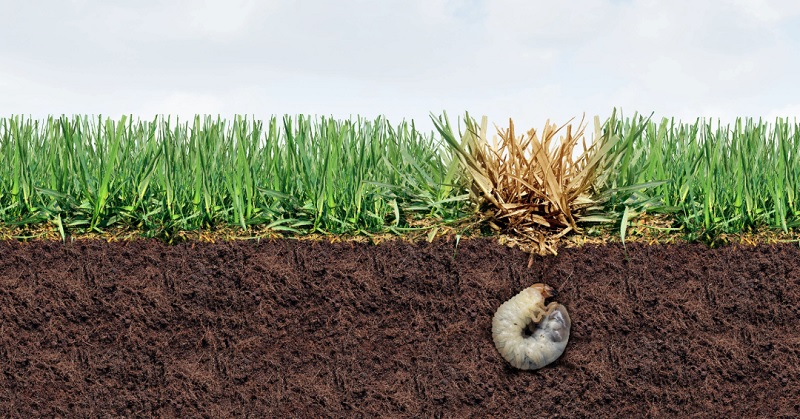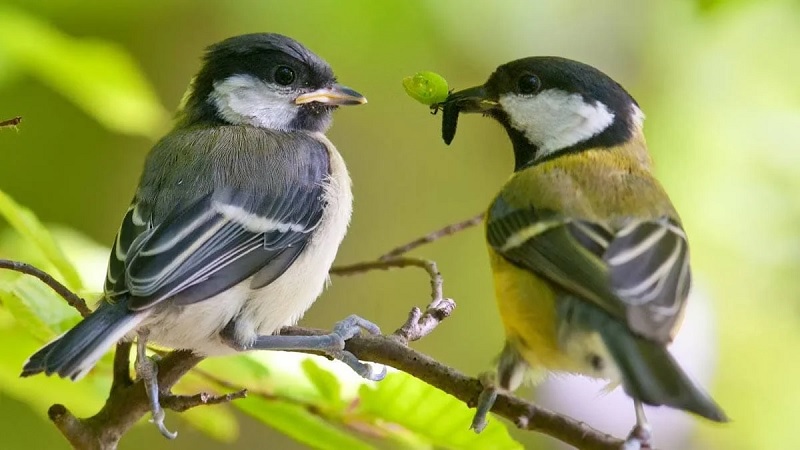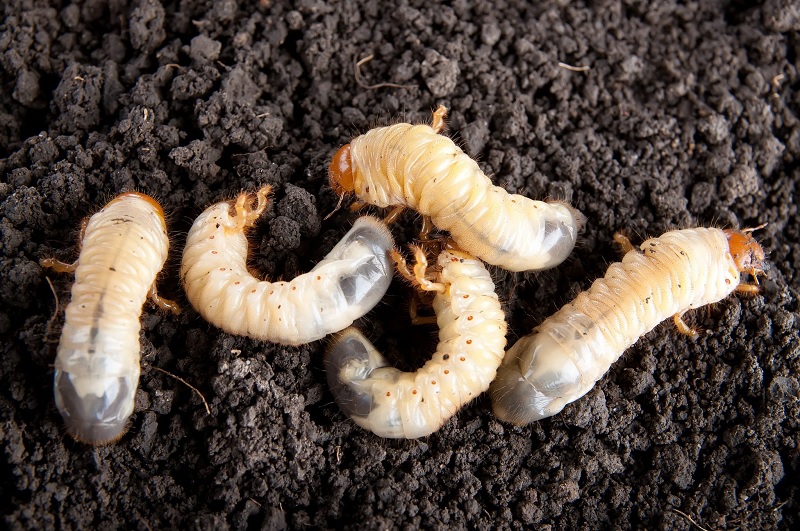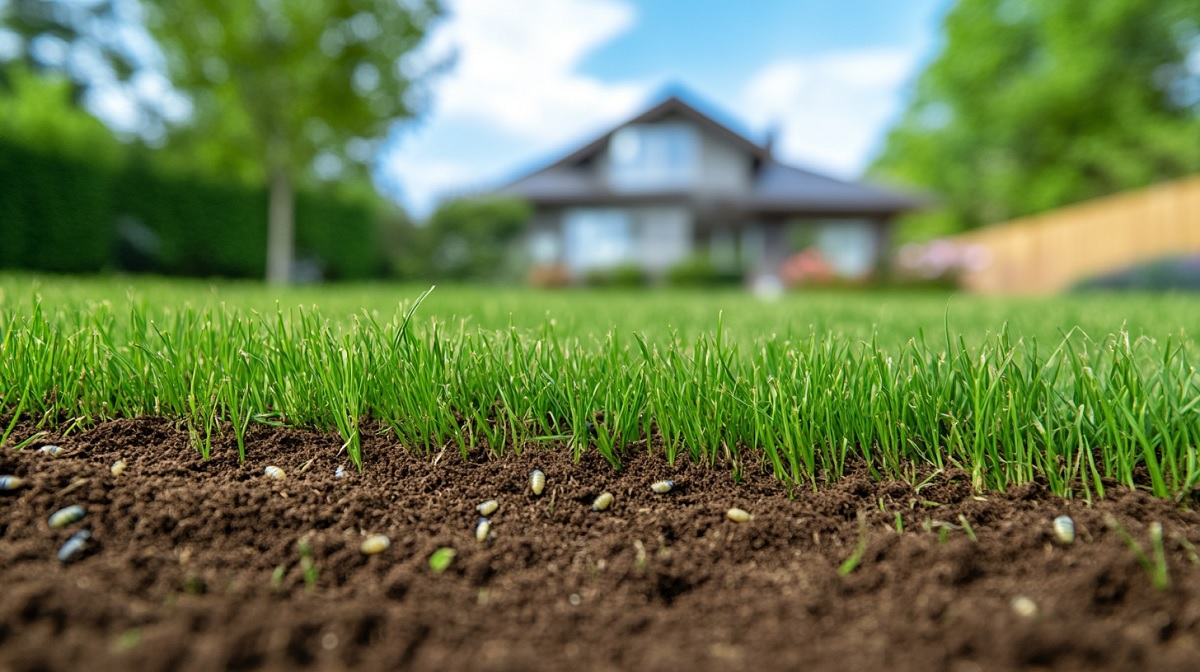Many bird owners are concerned about the safety of products they use for their pets or poultry, especially when it comes to medications or supplements. One common question that arises is, is Grubex safe for birds. Grubex is primarily known as a larvicide used in soil to control grubs and insects, but its use around animals requires careful consideration. Birds, whether kept as pets, in aviaries, or on farms, can be sensitive to chemicals that are safe for other animals or plants.
Understanding the potential risks, dosage guidelines, and proper handling of Grubex is essential to ensure the health and safety of your birds. By exploring whether Grubex is safe for birds, you can make informed decisions, prevent accidental poisoning, and maintain a safe environment while managing pests effectively in areas where birds are present.
Composition and Active Ingredients
Understanding the composition and active ingredients of Grubex is essential when considering its safety for birds. The formulation determines its effectiveness against pests and its potential toxicity. Knowing these details helps you assess the risks, handle the product properly, and protect the health of birds in your care.

Active Ingredient – Halofenozide
The primary active ingredient in Grubex is halofenozide, a chemical designed to disrupt the growth and development of grub larvae. Halofenozide works by mimicking insect molting hormones, causing larvae to die before reaching maturity. While highly effective against soil-dwelling pests, its impact on non-target organisms, including birds, depends on exposure levels and ingestion. Birds may experience adverse effects if they directly ingest treated soil, contaminated food, or water. Understanding the mechanism of halofenozide emphasizes the importance of controlled application and precautionary measures to minimize risk to birds while maintaining pest control effectiveness.
Other Ingredients and Formulation
Grubex also contains inert ingredients that help stabilize the active chemical, improve handling, and enhance soil penetration. These components are generally considered non-toxic, but they can influence the overall safety profile of the product. Birds exposed to treated areas may come into contact with both active and inert ingredients, which makes it important to follow manufacturer guidelines for application and reentry intervals. Proper knowledge of the full composition allows you to take informed steps to protect birds from accidental exposure, ensuring that pest management does not compromise their health.
Environmental Considerations
The composition of Grubex determines how it interacts with the environment, including soil, water, and surrounding vegetation. While halofenozide targets grubs specifically, persistence in soil or runoff can pose indirect risks to birds. Knowing the product’s breakdown rate, solubility, and potential accumulation helps you plan safe application zones and avoid areas frequented by birds. Understanding these environmental factors allows you to reduce unintended exposure, ensuring that pest control measures are both effective and responsible in protecting wildlife, including birds.
Effects on Birds
Assessing the effects of Grubex on birds is critical for maintaining their health and safety. While the product targets soil-dwelling grubs, improper exposure or ingestion can lead to adverse outcomes. Understanding potential effects helps bird owners take precautions and minimize risks associated with using Grubex in areas where birds are present.

Acute Toxicity
Direct ingestion of Grubex or contaminated soil can cause acute toxicity in birds, leading to symptoms such as vomiting, lethargy, reduced appetite, and digestive disturbances. Although halofenozide is designed to target insects specifically, birds are still vulnerable to high doses or repeated exposure. Observing birds for unusual behavior after using Grubex is essential, and prompt veterinary attention can prevent severe complications. The risk highlights the importance of controlled application and ensuring that birds do not have access to freshly treated areas.
Long-Term Exposure
Long-term exposure to Grubex, even in small amounts, may impact birds’ overall health and reproduction. Chronic contact with treated soil or residue can disrupt normal feeding patterns, weaken immunity, and reduce reproductive success. Birds living in treated environments may ingest small particles over time, leading to subtle but cumulative effects. Understanding the potential for long-term consequences emphasizes the need for proper timing, dosage, and restricted access to treated areas to safeguard avian well-being while maintaining effective pest control.
Behavioral Changes
Exposure to Grubex can also cause behavioral changes in birds. They may become more lethargic, avoid treated areas, or show signs of stress, impacting their natural foraging, social interactions, and nesting habits. Monitoring behavior is crucial for early detection of adverse effects. Awareness of these behavioral indicators allows bird owners to intervene quickly, remove birds from contaminated areas, and implement safety measures to prevent repeated exposure. This demonstrates the importance of understanding how chemicals like Grubex can indirectly influence bird behavior and overall health.
Safety Measures
Ensuring the safety of birds when using Grubex requires careful planning, proper handling, and adherence to recommended guidelines. One of the most important measures is restricting access to treated areas. Birds should be kept away from lawns, gardens, or fields where Grubex has been applied until the product has fully settled and degraded according to the manufacturer’s instructions. This prevents accidental ingestion of treated soil, water, or vegetation, which could lead to toxicity. Proper application techniques are also crucial. Wearing gloves, using appropriate tools, and following dosage instructions reduces the risk of spills or over-application. Avoid applying Grubex directly to bird feeding or nesting areas. If possible, schedule treatments during times when birds are less active or absent from the area.

Storage and disposal of Grubex should be handled carefully to prevent accidental exposure. Keep the product in a secure location away from birds and other animals. Do not dispose of leftover product in areas accessible to wildlife, as this could create hazards. Monitoring birds after application is another key safety measure. Observing for changes in behavior, appetite, or activity can help detect early signs of exposure. Prompt action, such as moving birds to a safe area and consulting a veterinarian, ensures their well-being.
Alternatives to Grubex
For bird owners concerned about safety, exploring alternatives to Grubex provides options to control pests without risking avian health. These alternatives include natural, mechanical, and less toxic chemical solutions. Understanding and implementing these options can help you maintain effective pest control while protecting birds in your environment.
Biological Control
Biological control involves using natural predators or beneficial organisms to manage grub populations. Nematodes, for example, are microscopic worms that target grubs in the soil without harming birds or other wildlife. Birds and pets remain safe as these organisms are specific to the pests. Introducing beneficial insects or microbial agents creates a balanced ecosystem, reducing the need for chemical larvicides. Biological control is environmentally friendly and sustainable, making it an ideal alternative for areas where birds are present or for owners seeking organic pest management strategies.
Mechanical Removal
Mechanical removal techniques include hand-picking grubs, tilling soil, or using traps to reduce pest populations. While labor-intensive, these methods eliminate the risk of chemical exposure for birds. Mechanical control allows for precise targeting of pests and can be combined with other safe practices like crop rotation or soil aeration to enhance effectiveness. Using these hands-on methods ensures that you maintain a bird-friendly environment while still addressing grub infestations efficiently.
Organic and Low-Toxicity Products
Several organic or low-toxicity products are available as alternatives to Grubex. These may include insecticidal soaps, neem-based solutions, or diatomaceous earth, which target pests without significant risk to birds. Proper application and adherence to label instructions ensure effectiveness while minimizing exposure. These products provide a safe approach to grub management, particularly in areas where birds forage or nest, allowing you to protect avian health while controlling unwanted insects.
Habitat Management
Altering the environment can reduce grub populations naturally. Practices like removing excess thatch, improving drainage, and maintaining healthy turf or garden areas make conditions less favorable for grubs. Habitat management reduces reliance on chemical treatments and creates a safer space for birds. By promoting a balanced ecosystem, these strategies help control pests while supporting bird activity and overall environmental health.
Expert Recommendations
Experts emphasize that when using pest control products like Grubex around birds, safety and precaution are paramount. Understanding the chemical composition, active ingredients, and potential risks allows you to make informed decisions that protect avian health while effectively managing grub populations. Professionals recommend limiting bird access to treated areas during and immediately after application. This prevents accidental ingestion of treated soil, plants, or water, reducing the risk of toxicity. Maintaining a safe distance and adhering strictly to the manufacturer’s guidelines ensures that birds are not exposed to harmful levels of chemicals.
Experts also advise exploring non-chemical alternatives or integrating multiple approaches for safer pest control. Biological controls, such as beneficial nematodes, mechanical removal, and habitat management, are recommended to reduce chemical exposure while still maintaining effective grub management. These strategies not only protect birds but also support environmental sustainability and reduce long-term dependency on chemical larvicides. Monitoring birds for behavioral changes after any treatment is another key recommendation. Birds may exhibit signs of stress, lethargy, or digestive issues if exposed, and early intervention can prevent serious health consequences. Consulting a veterinarian with experience in avian care provides guidance for managing exposure and treating affected birds promptly.
Common Misconceptions
When considering products like Grubex around birds, several misconceptions can lead to unsafe practices. Understanding the facts helps you protect avian health while effectively managing pests. Separating myths from reality ensures responsible use, informed decision-making, and minimal risk to birds in your environment.
Grubex Is Harmless to Birds
A common misconception is that Grubex is completely safe for all birds. While halofenozide targets grubs specifically, birds can still be affected if they ingest treated soil, water, or vegetation. Believing it is entirely harmless may lead to unintentional exposure. Proper precautions, restricted access to treated areas, and adherence to manufacturer guidelines are essential to prevent toxicity and maintain bird safety.
Birds Can Eat Treated Soil Without Risk
Some assume birds can forage freely on treated lawns or garden beds without any consequences. In reality, ingestion of Grubex-contaminated soil or plant material can cause digestive upset, lethargy, or more severe symptoms depending on exposure. Recognizing that birds are vulnerable to accidental ingestion helps you implement safety measures, such as keeping them away from freshly treated areas.
Organic Alternatives Are Ineffective
Another misconception is that non-chemical or organic alternatives cannot control grubs effectively. Experts recommend biological controls, mechanical removal, and habitat management as safe and effective options. While results may vary, combining these approaches can reduce grub populations while minimizing chemical exposure and protecting birds. Understanding the value of alternatives encourages safer, responsible pest management practices.
Short-Term Use Means No Long-Term Effects
Some believe that brief exposure to Grubex has no lasting consequences for birds. Even small amounts consumed over time can impact health, feeding behavior, and reproduction. Awareness of cumulative effects ensures ongoing monitoring and proactive steps to safeguard birds in treated areas.
People Also Asked
What Is Grubex and How Does It Affect Birds?
Grubex is a larvicide primarily used to control soil-dwelling grubs and insects. Its active ingredient, halofenozide, targets insects’ molting process, making it highly effective for pest control. While designed for grubs, birds can be affected if they ingest treated soil, plants, or contaminated water. Understanding how Grubex interacts with birds helps you take precautions to minimize accidental exposure and protect their health.
Can Birds Be Poisoned by Grubex?
Yes, birds can be poisoned if they directly ingest Grubex or feed in treated areas too soon after application. Acute exposure may cause symptoms such as lethargy, vomiting, reduced appetite, or digestive disturbances. The risk depends on the amount ingested and the bird’s size and species. Keeping birds away from treated areas and following proper application guidelines significantly reduces the risk of poisoning.
How Can I Safely Use Grubex Around Birds?
To use Grubex safely, restrict bird access to treated areas until the product has settled and degraded. Apply the larvicide according to manufacturer instructions, avoid over-application, and schedule treatments when birds are less active in the area. Proper protective gear, careful handling, and avoiding sensitive areas like feeders or nesting sites are essential steps to protect birds while controlling pests.
Does Grubex Have Long-Term Effects on Birds?
Long-term exposure to Grubex may impact birds’ health, affecting feeding behavior, immunity, and reproductive success. Even small amounts ingested repeatedly can accumulate, leading to subtle health issues. Monitoring birds in treated areas and limiting their exposure helps prevent long-term negative effects while maintaining safe pest management practices.
What Should I Do if a Bird Is Exposed to Grubex?
If a bird is exposed, move it immediately to a safe, uncontaminated area and monitor for symptoms such as lethargy, vomiting, or unusual behavior. Contact a veterinarian experienced with avian species for proper guidance and treatment. Prompt intervention can prevent severe complications and improve the bird’s chances of recovery after accidental exposure to Grubex.
Final Thoughts
Determining whether is Grubex safe for birds requires careful consideration of its composition, application, and potential exposure risks. While Grubex effectively controls soil-dwelling grubs through its active ingredient halofenozide, birds can be affected if they ingest treated soil, plants, or contaminated water. Controlled application, restricted access to treated areas, and adherence to manufacturer guidelines are essential to minimize any risks.
Monitoring birds for unusual behavior after application and taking prompt action if exposure occurs further ensures their safety. Understanding the proper handling, timing, and precautions associated with Grubex allows you to protect bird health while achieving effective pest control. Evaluating the question of is Grubex safe for birds highlights the importance of responsible use, demonstrating that with careful management, it is possible to balance pest control needs with avian safety.
